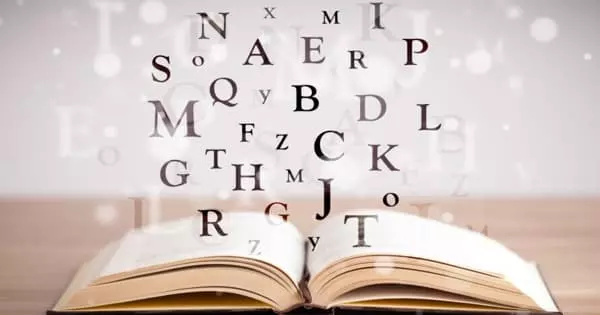Dyslexia is a type of reading disorder that affects many people. It can be traced back to a language-processing issue in which the brain frequently confuses the order of numbers, letters, and other images. Previous research had found that crowded text was especially difficult to read for people with dyslexia. Researchers at Anglia Ruskin University in Cambridge, England, wanted to see how much assistance an increase in letter spacing would provide.
According to a new study, simply increasing the space between letters in a piece of text can improve a child’s reading speed. The researchers discovered that text with more space between each letter benefited both dyslexic and non-dyslexic children. The dyslexia group increased reading speed by 13% on average, while the comparison group of non-dyslexic children increased reading speed by 5%.
Dr Steven Stagg of Anglia Ruskin University (ARU) led the study, which looked at the effects of letter spacing and colored overlays on a group of dyslexic and non-dyslexic children. It is the first study to look into how these adaptations can aid in the reduction of specific reading errors.
The study, which was published in the journal Research in Developmental Disabilities, discovered that text with more space between each letter benefited both groups of children. The dyslexia group increased reading speed by 13% on average, while the comparison group of non-dyslexic children increased reading speed by 5%.
We discovered that extra-large letter spacing increases reading speed in both dyslexic and non-dyslexic children and significantly reduces the number of words skipped by dyslexic children when reading.
Dr. Steven Stagg
The study included 59 children aged 11 to 15, 32 of whom had a diagnosis of dyslexia, and 27 non-dyslexic children who served as a control group. Six UK schools in Cambridgeshire, Hertfordshire, and London were used to select the participants.
The study was led by Dr. Steven Stagg of Anglia Ruskin University (ARU), and it looked at the effects of letter spacing and colored overlays on a group of dyslexic and non-dyslexic children. It is the first study to investigate how these adaptations can help reduce specific reading errors.
According to the findings of the study, which was published in the journal Research in Developmental Disabilities, text with more space between each letter benefited both groups of children. The dyslexic children improved their reading speed by 13% on average, while the non-dyslexic children improved their reading speed by 5%.

The study included 59 children aged 11 to 15, 32 of whom were dyslexic and 27 non-dyslexic children who served as a control group. The participants were chosen from six UK schools in Cambridgeshire, Hertfordshire, and London.
According to Dr. Stagg, Senior Lecturer in Psychology at Anglia Ruskin University (ARU), “We discovered that extra-large letter spacing increases reading speed in both dyslexic and non-dyslexic children and significantly reduces the number of words skipped by dyslexic children when reading.
“We believe that extra-large letter spacing works by reducing the ‘crowding effect,’ which can impede letter recognition and slow reading speed. When viewed in the context of previous research, our findings strongly suggest that teachers can be confident that increased letter spacing in reading materials would benefit all children. In addition to being a relatively simple change to make when creating handouts and worksheets, it means that children with dyslexia do not have to feel singled out by the introduction of specially adapted reading materials, as this is something that everyone can benefit from.”
“While we discovered that color overlays provided little benefit, we believe that children should be encouraged to use them if they find them useful for reading. Color overlays may not improve reading speed, but they may improve reading stamina. Previous research suggests that their benefits may not be apparent if reading time is less than 10 minutes, and the short reading duration of the tests in our study may have disadvantaged color overlays.”
People with dyslexia frequently use reading aids such as colored overlays. As a result, the researchers made those available to the students here. These plastic sheets are colored in a variety of ways. Readers lay the plastic over the text and read through it.
















